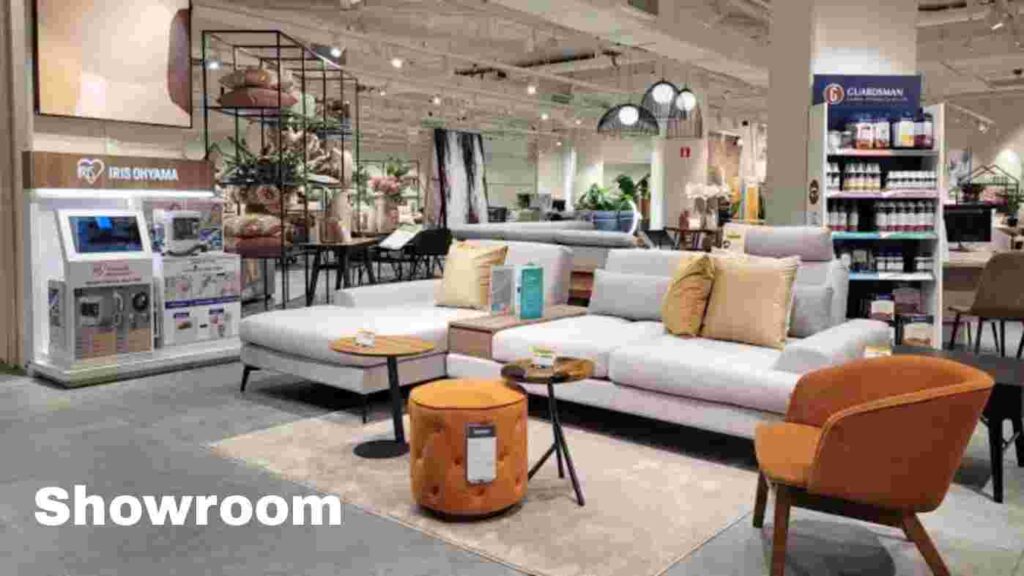A showroom plays a crucial role in the success of many businesses, especially those in retail, automotive, electronics, and luxury goods sectors. It is more than just a physical space; it is a powerful marketing tool that influences customer perception, boosts sales, and builds brand loyalty. In this comprehensive guide, we will explore everything you need to know about showrooms, including their importance, design tips, types, benefits, and how to optimize them for maximum impact.
What Is a Showroom? Understanding Its Role in Business
A showroom is a dedicated space where businesses display their products or services to potential customers. Unlike a traditional retail store, a showroom often emphasizes visual presentation and customer experience, allowing visitors to see, touch, and sometimes even test products before making a purchase. It serves as a bridge between the online or catalog view of products and the actual buying experience, providing customers with a tangible sense of quality and value.
Typically, showrooms are used by industries such as automotive dealerships, furniture stores, electronics brands, and luxury fashion brands. They are designed not only to showcase products but also to educate customers, answer queries, and persuade visitors to convert into buyers.
Importance of a Showroom in Business Strategy
Having an effective showroom can significantly influence a company’s sales and brand image. Here are some reasons why a showroom is vital:
- Enhances Customer Experience: Showrooms create an immersive environment where customers can physically examine products, which helps build trust and confidence in the purchase.
- Showcases Product Quality: Visual presentation allows businesses to highlight the craftsmanship, design, and features of their offerings.
- Supports Brand Positioning: A well-designed showroom reflects the brand’s identity, values, and premium positioning, elevating customer perception.
- Increases Conversion Rates: Customers are more likely to buy after experiencing a product firsthand in a showroom setting.
- Reduces Return Rates: Seeing and handling products reduces misunderstandings and mismatched expectations, leading to fewer returns.
- Provides Competitive Edge: A modern, inviting showroom differentiates your brand from competitors who may only operate online or have less appealing physical spaces.
Designing an Effective Showroom: Tips and Best Practices
Creating a showroom that attracts visitors and encourages purchases requires thoughtful design and planning. Here are some essential tips for designing an effective showroom:
1. Understand Your Target Audience
Identify who your primary customers are—their preferences, shopping behaviors, and expectations. Tailoring the showroom layout and aesthetics to meet their needs will improve engagement and sales.
2. Focus on Layout and Flow
Design a logical and smooth flow that guides visitors naturally through the space. Use clear pathways, focal points, and signage to direct attention to key products. Avoid clutter, and ensure that high-demand items are prominently displayed.
3. Prioritize Lighting
Lighting plays a vital role in highlighting products and creating an inviting atmosphere. Use a combination of ambient, accent, and task lighting to showcase details and enhance the overall ambiance.
4. Use High-Quality Displays
Invest in attractive and durable display units that complement your brand image. Incorporate digital screens, interactive kiosks, or virtual reality setups to provide an engaging experience.
5. Incorporate Branding Elements
Ensure your showroom reflects your brand identity through colors, logos, signage, and decor. Consistent branding reinforces recognition and trust.
6. Create a Comfortable Environment
Provide seating areas, refreshments, and a welcoming atmosphere. Comfortable customers are more likely to spend time exploring your offerings.
7. Leverage Technology
Integrate modern technology like augmented reality, virtual tours, and online catalogs to enhance the customer experience and provide additional information about products.
Types of Showrooms and Their Unique Features
Different industries and business models require different types of showrooms. Understanding these variations helps in designing the most effective space for your needs.
Automotive Showrooms
Typically large spaces that display various vehicle models, allowing customers to examine cars closely. They often include customer lounges, test-drive areas, and digital displays for customization options.
Furniture Showrooms
Showroom spaces where furniture pieces are arranged to mimic real-life settings like living rooms, bedrooms, and dining areas. The goal is to inspire customers and help visualize how items fit into their homes.
Electronics and Appliance Showrooms
These showrooms feature the latest gadgets, appliances, and entertainment systems. Interactive displays and demonstrations are common to showcase product features.
Luxury Goods Showrooms
Designed to evoke elegance and exclusivity, these showrooms often feature minimalist decor, personalized service, and private viewing areas for high-end products like jewelry, watches, or designer fashion.
Fashion and Apparel Showrooms
Fashion showrooms focus on displaying clothing lines, accessories, and footwear in a way that highlights style and versatility. They often include fitting rooms and stylists to assist customers.
Benefits of Investing in a Modern Showroom
Investing in a contemporary and well-maintained showroom offers numerous advantages:
- Boosts Brand Credibility: A sleek, professional space signals that your business is established and trustworthy.
- Increases Sales Opportunities: A well-designed showroom attracts more visitors and encourages longer stays, increasing the likelihood of purchases.
- Provides a Competitive Advantage: An innovative showroom experience sets your brand apart from competitors who rely solely on online sales or basic physical stores.
- Facilitates Customer Engagement: Interactive elements and personalized service foster deeper connections with customers.
- Supports Marketing Efforts: Showrooms can host events, product launches, and demonstrations that generate buzz and attract media attention.
How to Optimize Your Showroom for SEO and Customer Engagement
Optimizing your showroom for digital visibility and customer engagement is essential in today’s competitive landscape. Here’s how to do it:
1. Create a Strong Online Presence
Maintain an updated website with high-quality images, virtual tours, and detailed descriptions of your showroom. Use local SEO strategies to appear in searches like “showroom near me” or “best showroom in [location].”
2. Use Google My Business
Register your showroom on Google My Business to improve local search visibility, gather reviews, and share updates or events.
3. Incorporate SEO-Friendly Content
Write blog posts, guides, and FAQs related to your showroom offerings. Use your focus keyword “showroom” naturally within content to improve search engine rankings.
4. Leverage Social Media
Share virtual tours, customer testimonials, and behind-the-scenes content on platforms like Instagram, Facebook, and LinkedIn to engage your audience.
5. Offer Virtual Showroom Experiences
Develop virtual tours or online consultations to reach customers who prefer shopping from home. This also enhances your SEO by providing fresh, relevant content.
6. Collect and Display Customer Reviews
Positive reviews boost your showroom’s credibility and improve local SEO rankings. Encourage satisfied customers to share their experiences.
7. Host Events and Promotions
Organize product launches, workshops, or exclusive previews to attract visitors and generate buzz both online and offline.
Maintaining and Updating Your Showroom
A successful showroom requires ongoing attention to stay relevant and appealing. Regularly update displays, refresh decor, and incorporate new products. Collect customer feedback to identify areas for improvement. Invest in staff training to ensure exceptional customer service, and keep the space clean and well-maintained.
Conclusion: The Future of Showrooms
As the retail landscape evolves, showrooms remain a vital component of a comprehensive customer engagement strategy. The integration of digital technology, personalized experiences, and innovative design will continue to redefine what a showroom can be. Whether you’re launching a new product line or seeking to elevate your brand, investing in a thoughtfully designed, SEO-optimized showroom can deliver significant benefits.
Creating an engaging space that reflects your brand values and meets customer expectations will help you stand out in a competitive market. Remember, a showroom is not just a physical location; it’s an experience that can turn visitors into loyal customers and advocates for your brand.


